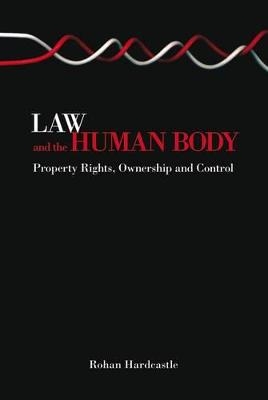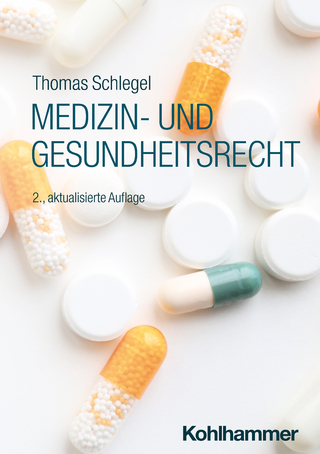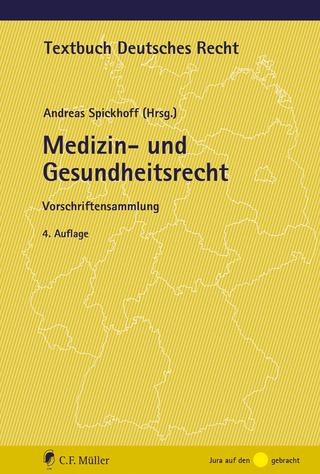
Law and the Human Body
Hart Publishing (Verlag)
978-1-84113-977-7 (ISBN)
Do you own your body? Advances in science and the development of genetic databases have added an aura of modern controversy to this long-standing and, as yet, unresolved problem. In particular, English law governing separated human tissue (including organs, DNA and cell-lines) is unsatisfactory. Despite the enactment of the Human Tissue Act 2004 UK, it remains uncertain what property rights living persons can claim over tissue separated from their bodies. The development of clear legal principles is necessary to protect the rights of individuals while also enabling the efficient use of such materials in medical research. Part I of Law and the Human Body traces the evolution of English, Australian, United States and Canadian law in relation to human tissue separated from living persons and dead bodies. This includes a comprehensive examination of the Human Tissue Act 2004 UK as well as prominent judicial decisions, including Re Organ Retention Group Litigation [2005] QB 506, Colavito v New York Organ Donor Network Inc 8 NY 3d 43 (NY CA 2006) and Washington University v Catalona 490 F 3d 667 (8th Cir 2007).
Analysis demonstrates that, although property rights and non-proprietary interests in separated human tissue are recognised in limited circumstances, no principled basis has been accepted either at common law or by statute for the recognition of these rights and interests. Part II of this book develops and defends a principled basis in English law for the creation and legal recognition of property rights and non-proprietary interests in separated human tissue. Significantly, the analysis and principles presented in Law and the Human Body have application across common law and civil law jurisdictions worldwide...a welcome and stimulating addition to the debate...Thought-provoking, unflinching, thoroughly researched in its descriptive content and well worth reading, it will appeal to academics across a range of disciplines, legal practitioners, policy-makers, lawmakers, biomedical researchers and biobanking professionals alike, both in the UK and internationally...One can also applaud the very welcome and timely addition of this significant, stimulating, refreshingly frank and often provocative new work to the growing canon of literature in this dynamic and important area. Susan M.
C. Gibbons, Medical Law Review ...a welcome addition to the literature of law and medicine. It summarises the existing state of the law comprehensively and provides informed insights into the way the law can legitimately employ property rights to govern an increasingly complicated area. The author is to be commended for a well-written, accessible book that is useful to both the legal and medical communities. Ben Kremer, Bar News (The Journal of the NSW Bar Association) ...a clear, comprehensive and modern treatment of a central legal and bioethical debate which no student or teacher of the law in that area can do without...an extremely useful volume which will be equally valuable to honours and postgraduate students and their teachers, and to researchers whose primary expertise is in another field but who find themselves in need of a reliable and readable guide to these issues. Mary Ford, The Edinburgh Law Review ...a well written, largely black letter, book which engages in close and careful legal analysis and proffers a skilfully crafted argument.
It is a readable and compelling thesis which deserves a wide audience within both the academic and practitioner global legal communities. David Price, Medical Law International ...provides a powerful indictment of the current law on bodies. The first part of this book lays bare the lack of legal principle and analysis that underlies the law, even in the recent Human Tissue Act 2004. This is done in a scholarly and effective way. I have no doubt that Hardcastle's proposals for reform would produce a more intellectually satisfying state for the law to be in. Jonathan Herring, Legal Studies
Rohan Hardcastle, BA LLB (Hons) (UWA) D Phil (Oxon), has been admitted as a Barrister and Solicitor of the Supreme Court of Western Australia and currently practises as a barrister in New South Wales.
CHAPTER 1 INTRODUCTION
ABiological Materials and Scientific Research
1Human Tissue Collections and Genetic Databases
(a)Tissue Collections
(b)Genetic Databases
2Biological Materials
(a)Physical Manifestations
Genetic Information
BLegal Framework
1Legal Status of Biological Materials
2Proprietary Protection
3Non-proprietary Protection
CStructure
PART I
CHAPTER 2 DEAD BODY
ANo Property Principle
BProperty Rights
1Work or Skill Exception
2Constitutional Protection
3Tort of Wrongful Interference
4Summary
CNon-proprietary Interests
1Right to Possession for Burial
2Quasi-property Rights
3Statutory Rights to Possession
4Protection under Tort Law
5Solatium for Affront
6Respect for Private and Family Life
7Summary
DConclusion
CHAPTER 3 LIVING BODY
ASlavery
BRejection of Individual Property Rights
1Moore v Regents of the University of California
2Greenberg v Miami Children's Hospital
3Washington University v Catalona
4Summary
CProperty Rights
1Biological Materials
(a)Statute
(b)Common Law
(c)Summary
2Cell-lines
3Gametes
(a)Statute
(b)Common Law
4Hair Clippings
5Waste Products
6Summary
DNon-proprietary Interests
1Statute
2Common Law
3Summary
EConclusion
CHAPTER 4 HUMAN TISSUE ACT 2004
AHuman Tissue Act 2004
1Consent Requirements
2Exceptions to Consent Requirements
3Prohibition on Commercial Dealing
(a)Original Clause 29
(b)Section 32
4Non-consensual DNA Analysis Offence
5Summary
BConclusion
PART II
CHAPTER 5 PROPERTY RIGHTS
AQuestion
BTransformation of Biological Materials
CCreation of Property Rights
1Work or Skill Exception
2First Possession
3Specification Doctrine
(a)Background
(b)Elements
(c)Application to Work or Skill Exception
(d)General Principle
DConclusion
CHAPTER 6 CREATION AND ALLOCATION OF PROPERTY RIGHTS
AProperty Principles
1Detachment
2Detachment plus Intention
(a)Judicial Support
(b)Intention
(c)Difficulties
3Summary
BApplication
1Original Biological Materials
(a)Transfer
(b)Abandonment
(c)Remedies
(d)Summary
2Additional Biological Materials
(a)Medical and Scientific Research
(b)Intellectual Property
(c)Specification and Accession
(d)Application
(e)Summary
CConclusion
CHAPTER 7 NON-PROPRIETARY INTERESTS
AProtected Interests
BEnglish Law
1Autonomy
(a)Underlying Value
(b)Wrongs
2Emotional Distress
(a)Definition
(b)Wrongs
3Summary
CDeveloping Liability
1Protected Interests
2Conduct
3Elements
DConclusion
CHAPTER 8 CONCLUSION
| Erscheint lt. Verlag | 28.4.2009 |
|---|---|
| Verlagsort | Oxford |
| Sprache | englisch |
| Maße | 156 x 234 mm |
| Gewicht | 362 g |
| Themenwelt | Recht / Steuern ► EU / Internationales Recht |
| Recht / Steuern ► Privatrecht / Bürgerliches Recht ► Medizinrecht | |
| ISBN-10 | 1-84113-977-7 / 1841139777 |
| ISBN-13 | 978-1-84113-977-7 / 9781841139777 |
| Zustand | Neuware |
| Haben Sie eine Frage zum Produkt? |
aus dem Bereich


